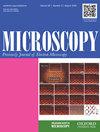Ne离子辐照下Zr–1Nb合金中β沉淀的溶解研究
IF 1.8
4区 工程技术
引用次数: 1
摘要
研究了在能量为250的Ne离子辐照下Zr–1Nb合金中β沉淀的稳定性 keV作为辐照剂量的函数。在573的温度下进行了高达~136 dpa的辐照 K.微观结构研究表明,高达~38dpa时,沉淀物的尺寸会增加,当辐照剂量>38dpa,沉淀物的大小会减小。样品的辐照后能量色散光谱法显示,整个基体中的Nb浓度为~0.8–1.5%。还对辐照样品进行了三维原子探针断层扫描,以寻找任何纳米团簇的存在。然而,在样品中没有观察到Nb聚集。有人提出,通过辐照引起Nb在Zr中的溶解度极限的增加,可以促进沉淀物的溶解。通过引入辐照产生的缺陷和β相的不稳定,溶解度极限可能会增加。这可能通过辐射增强扩散导致Nb原子向基体的反扩散,以降低由缺陷产生的应变,从而导致沉淀物的溶解。本文章由计算机程序翻译,如有差异,请以英文原文为准。
Study on the dissolution of β-precipitates in the Zr–1Nb alloy under the influence of Ne ion irradiation
The stability of β-precipitates in the Zr–1Nb alloy has been studied under Ne ion irradiation of energy 250 keV by insitu transmission electron microscope as a function of irradiation dose. The irradiation was carried out up to ∼136 dpa at 573 K. Microstructural investigations have shown that up to ∼38 dpa, precipitates showed an increase in size, and for irradiation doses >38 dpa, the size of the precipitates was noticed to reduce. Post-irradiation energy-dispersive spectrometry of the specimens revealed the Nb concentration throughout the matrix to be ∼0.8–1.5%. Three-dimensional atom probe tomography was also carried out for irradiated specimens to look for the presence of any nanoclusters. However, Nb clustering was not observed in the specimens. It is proposed that the dissolution of the precipitates may be facilitated by an increase in the solubility limit of Nb in Zr caused by irradiation. The solubility limit may increase by the introduction of defects generated by irradiation and by the destabilization of the β-phase. This may result in back-diffusion of Nb atoms to the matrix by radiation-enhanced diffusion to lower the strain produced by the defects, resulting in the dissolution of the precipitates.
求助全文
通过发布文献求助,成功后即可免费获取论文全文。
去求助
来源期刊

Microscopy
工程技术-显微镜技术
自引率
11.10%
发文量
0
审稿时长
>12 weeks
期刊介绍:
Microscopy, previously Journal of Electron Microscopy, promotes research combined with any type of microscopy techniques, applied in life and material sciences. Microscopy is the official journal of the Japanese Society of Microscopy.
 求助内容:
求助内容: 应助结果提醒方式:
应助结果提醒方式:


